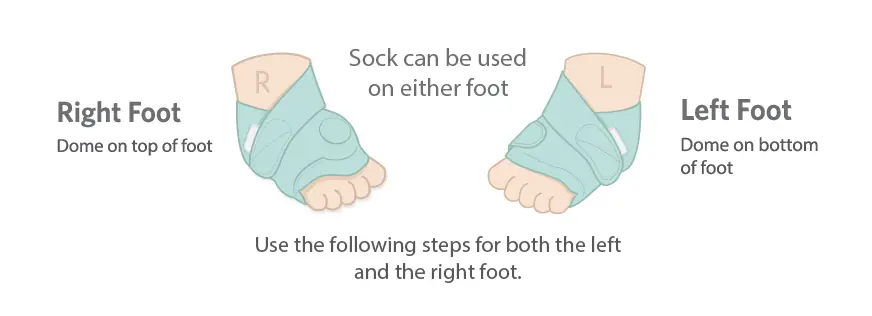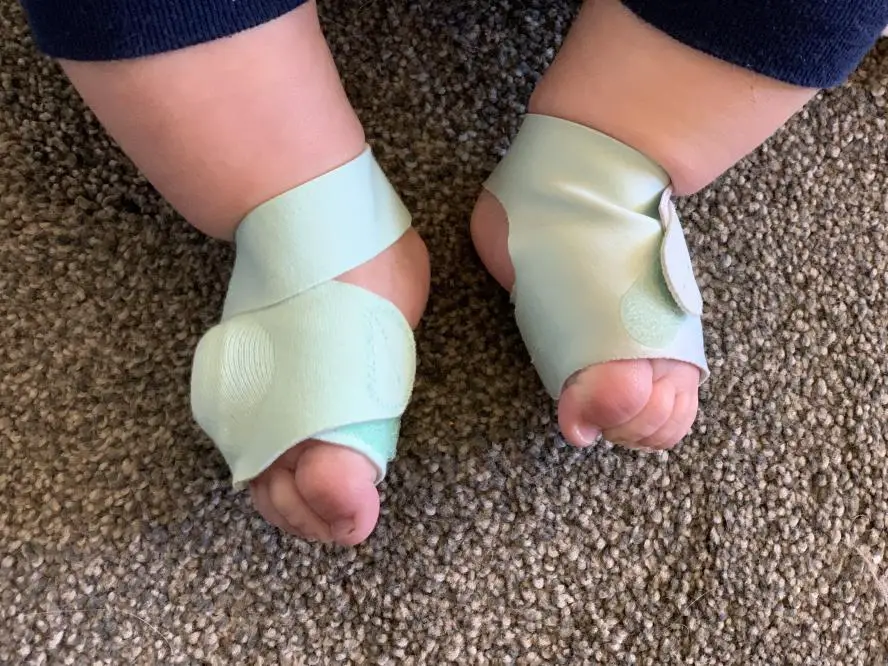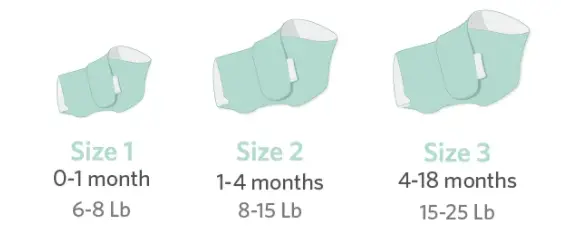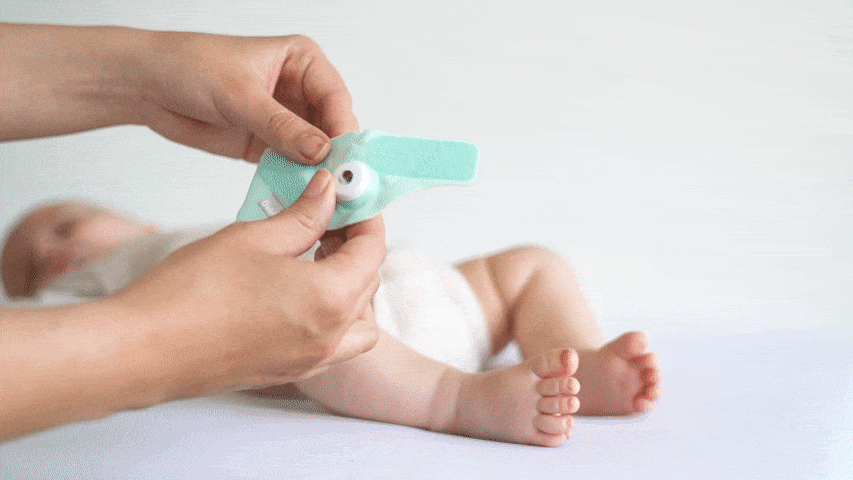As any new parent can relate, having newborn leaves you with the nagging question, “How To Put On Owlet Sock? Or “Is my baby okay?” This can be a very overwhelming feeling that can make you miss out on the good times you should have.
Back in the day, when our moms gave birth to us, the only way they could check on us was to hover over our cribs all the time. This made them even more tired. Fast forward to 2022, and the technology we have access to is amazing.
Parents now have more peace of mind than we could have ever hoped for because of the progress that has been made. The newest product on the market is going to change everything. You only need to know How to put on owlet sock to keep an eye on your baby.
What is an Owlet sock?
Owlet sock is a two-part device that includes a bootie that is easy to put on your child’s foot and a base station that you can put next to your bed or in the living room. The bootie keeps track of your child’s heart rate and oxygen levels and talks to the base station to let you know everything is fine. If bub’s readings go outside a certain range, the base station will let you know with sounds and lights.

Putting a baby to sleep can be scary for people who just had a baby. According to the Centers for Disease Control and Prevention, SIDS is the leading cause of death in babies aged 1 to 12 months, so it’s not surprising that parents of newborns are often worried.
Video monitors can be helpful, but new technology goes a step further. Pulse oximetry is used in hospitals to measure an infant’s heart rate and blood oxygen levels. Owlet Baby Monitors use this method to send information to a parent’s smartphone. The tiny wireless sensor goes into a baby sock that can be worn for up to 18 months. If the baby’s vital signs are too high, the sock alerts a base station with a red light and an alarm.
Key benefits of the owlet sock:
- The Owlet Sock fits comfortably around your baby’s foot and uses pulse oximetry to track their heart rate and oxygen levels.
- The base station glows green to indicate everything is well but will alert you with lights and sounds if anything appears wrong.
- With Owlet’s app, you can receive heart rate and oxygen levels in real-time and get notifications on your phone.
How New Parents Can Reduce Anxiety With A New Baby

- Evidence of “Peace of Mind”: 96% of parents who use Owlet feel less anxious, debunking the long-held belief that in-home monitoring causes parental worry.
- Improved Sleep Quality for Parents: 94% of parents report improved sleep quality when using the Owlet Smart Sock.
- Generational Change and Knowledge- Enabled Millennial Parents: In-home monitoring is used by 75% of parents for peace of mind or to learn more about their child.
- Healthcare Confidence: 37% of Owlet users lived with at least one healthcare industry professional.
- Safe Sleep for Babies: According to the American Academy of Pediatrics(AAP), 82% of parents follow safe sleep standards.
What You Get With the Owlet Set
1. Socks
First, the Owlet set comes with three different-sized socks so your baby can wear them as they grow.
Size 1: Newborn to one month
Size 2: 1–4 months
Size 3: 4–18 months
Your baby’s size can change because every baby grows differently.
2. Sensor
Of course, the actual heart monitoring sensor is also included. It slides into and out of the sock, making it simple to size up or wash when necessary.
3. Base Station
The base station is also a crucial component. It plugs into the wall, connects to your Wi-Fi, and alerts you to what’s going on, either the base’s light or the app, which shows live metrics.
4. Charging Cords
Last but not least, there are cords for charging.
No Subscriptions Required
Noting that neither of these things requires a subscription service is important. There are similar heart monitoring systems that cost money either monthly or yearly. But this isn’t one of them, which is a good thing since the product costs so much.
How to Use the Owlet Sock
Putting on the owlet sock for the first time will undoubtedly be difficult. It finishes up going backward or upside down more than once.
The most important feature is a small notch on the band that matches your child’s tiny pinky toe.
Once that’s done, gently wrap the sock around the ankle and Velcro.
After you’ve turned it on, you can activate the heart monitor device. This can be done via the app or by pressing the base station, which will turn it on. Because the app turns it on slowly, pushing the base station is more convenient.
One thing to keep in mind while turning it on and off: it makes a loud chime, so make sure to turn it on before putting the baby to sleep so the noise doesn’t startle him awake.
What Each Base Station Color Means
Once the owlet sock is in place, and the base station is turned on, it will light up in one of five colors:
- White: Sock is charged and plugged in.
- Blue: The sock isn’t on (it could be out of range or have no Wi-Fi signal).
- Green: It’s all good!
- Yellow: The sock isn’t in the right spot, so you can’t get a good reading. (When this happens, “Mockingbird” plays loudly, and an alert is sent to your phone. It can be scary, so ensure the system is turned off before taking the sock off. You’ll need to turn off the station, make some adjustments, and then turn it back on.)
- Red: There’s something wrong.
Live Monitoring of Baby’s Heart Rate and Oxygen Level

The app will display live tracking of your baby’s heart rate and oxygen saturation once it has received a proper reading and turned green. It includes adorable little meters for each that illustrate what range they should be in. The green zone for oxygen levels is 80-100 percent, and the heart rate should be between 60 and 220 beats per minute.
It updates every three seconds, and you’ll soon learn your baby’s average BPM, whether awake or asleep and be able to identify the difference. This is useful if you don’t have the camera pointed at him.
How to put on owlet sock, How Should It Be Placed On My Babies Foot?
Each owlet sock features a notch to aid in sock placement. On both feet, the sock notch should be 1cm behind the pinky toe. This will put the sensor in the greatest possible position to obtain reliable readings.
How Tight Should the Sock Be?
The Owlet Sock should be snug but not tight on your baby’s foot. The Velcro that overlaps should never be fastened past the Velcro at the bottom.
Can my baby wear owlet socks with footie pajamas?
Yes! Just make sure that the owlet sock is touching their skin. We suggest you use your best judgment and choose pajamas that are neither too tight nor too warm. Too much moisture and pressure can irritate the skin.
How do I insert the sensor?
Make sure you can see the light in the windows. Carefully insert the sensor and narrow end first. Make sure the dome is tucked inside. You should be able to see the two lights through the vinyl windows.
How do I Prevent False Notifications?
We want to fade into the background to give you peace of mind with minimal disturbances. So here are some tips and tricks to help you reduce blue, yellow, and red alerts.
BLUE NOTIFICATIONS:
These notifications mean that the owlet sock is no longer connected to the Base Station. We made a small owlet sock with low power and low frequency. This limits the distance between the Base Station and the owlet sock, but there are some easy fixes:
Move your body. You’ll cuddle up with your baby, and since the Base Station is only a few feet away, you’ll keep getting blue notifications. Here’s why: your body makes the perfect barrier between the owlet sock and the Base Station connection. If you need to hold or feed a baby in the middle of the night, you can turn off the Base Station with one tap. When you put the baby back to bed, don’t forget to turn it back on!
Also, don’t rock your baby or share a bed with them while using owlet socks.
Turn off monitoring when you leave the room with the baby.
It feels like you left the house without your underwear on (you laugh, but mommy-brain is dangerous!); the moment you close the door, you realize you forgot to turn off monitoring. It’s ok; soon, it will be second nature to “tap off” the Base Station before you leave.
When taking the baby out of the room, tap the base station to turn off notifications first (lights will turn off). When the baby is back in the room, tap the Base Station to turn notifications on (lights will turn back on).
Move Base Station closer to the baby
Move the Base Station closer to where the baby is sleeping. The Base Station’s range varies, like all radio emitting products, depending on location, home style, and building materials. If the Base Station gives blue alerts continually, try moving it closer to where the baby sleeps. Some parents can use the Base Station from their nightstand, while others keep it right in the baby’s room.
Never place the Base Station within reach of the crib.
YELLOW NOTIFICATIONS
Almost all yellow notices occur because the baby is wearing the wrong size sock or the sock is placed incorrectly. It confuses electronic devices, and they cannot read well. Make sure the sock looks good and fits your baby’s foot well.
Supervise only while the child is sleeping
This is the second biggest thing you can do to reduce yellow notifications. Motion and ambient light entering the owlet socks will disturb the electronics and cause false alarms.
Baby throws Owlet Sock off
Getting rid of the owlet sock can be a little more difficult as your child ages. Smart sock is specifically designed to reduce “heating up” events, but sometimes babies can be determined!
To keep owlet socks on your child’s feet, you can dress them in tight pajamas or wear an everyday sock over the Owlet Smart Sock. None of these solutions affect the ability of Smart Socks to read it and send it to the base station.
Position sensor
Inside the sock, small sensors are visible through two transparent windows.
If the sensors are not visible in the window (even if they are directly above the border), you can increase your chances of getting false alarms.
RED NOTIFICATIONS
A red message indicates a low oxygen level or an abnormally low or high heart rate.
Be sure to match the smart sock well
The red message usually occurs due to an incorrect sock fit. Ensure the owlet sock looks nice and fits your baby’s footwell with the sensors behind the baby’s toes.
The baby may be sick
Please note that sick infants often have more red false positives than healthy babies. When sick, your baby may have oxygen levels below our pre-set thresholds and trigger an alert.
Owlet should not be used as a diagnostic or medical tool. If you think your child is ill, you must ensure that he receives the necessary medical care.
Take Proper care of fabric socks
We recommend washing fabric socks at least once a week. After removing the electronic sock, use cold water to hand wash the fabric soak or machine wash the fabric sock in a garment bag on the gentle cycle.
Let the sock air dry completely before using it again. Avoid putting the socks in the dryer as the heat can warp the vinyl windows and cause the fabric to lose shape faster.
Long-term use of cloth socks
Of course, the fabric will wear out over time. If you plan to use Owlet Smart Sock 2 for future children, we recommend purchasing a new set of cloth socks for each child.
Discolored socks or sensors?
Over time we see discoloration on the sensor. It could be an ink stain problem due to natural skin oils or old dirt. Plastic is already very porous and likes to trap anything it gets its hands on. The fact that the sensor is white only exaggerates this problem.
If you notice any discoloration, wipe the sensor with a baby wipe or alcohol swab. Ensure it’s completely dry before charging or placing it on your little one.
What causes red marks, and how to avoid them?

Your child’s happiness is your top priority. Newborn skin is soft, sensitive, and well hydrated. Instead of the plastic window inside the sock, this area can’t breathe because plastic doesn’t absorb moisture like fabric. If the sock stays on one leg overnight, the infant may develop a “water bubble” in that area. Fortunately, they are very superficial and often resolve within a day.
To avoid this, Many mothers noticed redness on their children’s feet after using the Owlet Smart Sock. Although it’s not common, you should take it seriously. Just like a shoe that is too tight or too small, it can irritate your child’s skin and leave marks. Research shows that these burns are not electrical or thermal.
These red marks may appear in the following areas-
- Head of the right foot
- Bottom of left foot
1) Head of the right foot :
Pressure marks can be
caused in different ways. Contributing factors include: pressure from a tight fit, sock size that is too small, your child placing on the sensor while sleeping on their stomach (with their right foot), or standing too long (on the bottom left foot). What should you do?
- Check the size: Try increasing the size of a sock or loosening the straps of fabric socks. They should lie flat without rippling or puckering. Make sure the Velcro is aligned so the sensor stays straight up and down. This will help the windows line up.
- Turn it on: Rotate your feet to avoid putting too much pressure on your skin for too long.
2) Bottom of the left foot: These marks can be found on the top or bottom of the foot near the pinky toe where the vinyl windows of the cloth sock are and can be caused by different reasons: pressure, moisture, and friction. What should you do?
Pressure

As babies grow, their feet get rounded. This can come in between with the pulse oximeter’s ability to get a good reading because it places the sensor at an angle (instead of going straight up and down) – causing yellow notifications. The foot can press against the sensor when this happens, causing pressure.
The Owlet Smart Sock 2 has a weight limit of approximately 18-25 pounds, and since every foot is different, some little ones may outgrow the sock sooner than others, depending on the roundness of the foot.
Make sure your sock placement and size are correct and rotate the sock from foot to foot every night.
Humidity
We suggest placing the sock on a clean, dry foot without ointment or cream. Our sock does not absorb moisture as well as other socks due to the sensor components, and if moisture builds up, it can irritate your little one’s skin, such as diaper rash.
If your child sweats or has sweaty feet while sleeping, we recommend a comfortable amount of comfortable temperature (cooler shoes, a fan in the room, etc.) and limiting the time they wear the Smart Sock.
Movement
Your baby’s constant movement can cause hot spots on their feet if they are teething, have colic, or like to move around. If the skin is irritated enough, blisters can form quickly where the skin is hot. It’s the same as breaking in a new pair of shoes that don’t fit your foot right. This leads to rubbing over and over and irritation.
If a mark shows up, it will take time for the skin to heal. Don’t put the owlet sock back on the foot with the mark until the mark has gone away. Help the skin heal by putting on a barrier cream with petroleum jelly or something similar several times a day. When the mark is gone, you can put the Smart Sock 2 back on your foot, ensuring it is in the right place and size.
Smart Sock Fit & Placement
Every Owlet Smart Sock kit includes three fabric socks. These three socks are different sizes and provided because Sock fit and placement are critical to ensure your Smart Sock functions properly. If you have questions or comments regarding sock fit or placement, please watch the video below and read the article below. Note, proper Sock fit and placement will help eliminate Yellow notices you may be getting.
Which of the Three Fabric Socks Provided Should I Use?
You got three regular socks with your Owlet Smart Sock. Please remember that weight is usually a better way to choose the right size. We recommend using the updated fabric socks because they are more comfortable for babies and make using your Owlet device better overall.
Can the owlet Sock Be Worn On Both Feet?
Yes, Your owlet sock can be worn on either your right or left foot.
The sensor dome should be on top of the foot used on the right foot.
The sensor dome should be at the base of the foot used on the left foot.
Should You Get the Owlet Sock?
There are many things for babies on the market, like things to help them sleep and baby monitors. After all, what parent doesn’t want their child to sleep better? Even though not everyone needs a smart monitor, it’s something to consider if you’re always worried about safe sleep. The Owlet Monitor Duo can put your mind at ease and tell you important things about your baby’s sleep.
Being a child-parent is a very tough job. If there are things that make being a parent a little bit easier, you should put them on your registry or buy them yourself.
Final words:
Having a baby can get pretty messy. The Owlet sock also has the benefit of being easy to clean. It’s so convenient that you can take off the sensor and put the sock in the washing machine.
The Owlet Smart Sock comes with three sizes of socks, so you can change them as the baby grows.
Using pulse oximetry technology, which most people know as the red light they clip on your finger at the hospital, it tracks your baby’s heart rate and oxygen levels while they sleep.
The sock sends alerts to your smartphone via Wi-Fi and a low-power Bluetooth base station, so you can check to see if your baby is sleeping well or be notified if his or her heart rate or oxygen levels fall outside of pre-setting zones.
Owlet sock lets parents know their babies are safe. The Owlet Smart Sock is the latest must-have baby product. It is the perfect baby monitor that will give you peace of mind.

